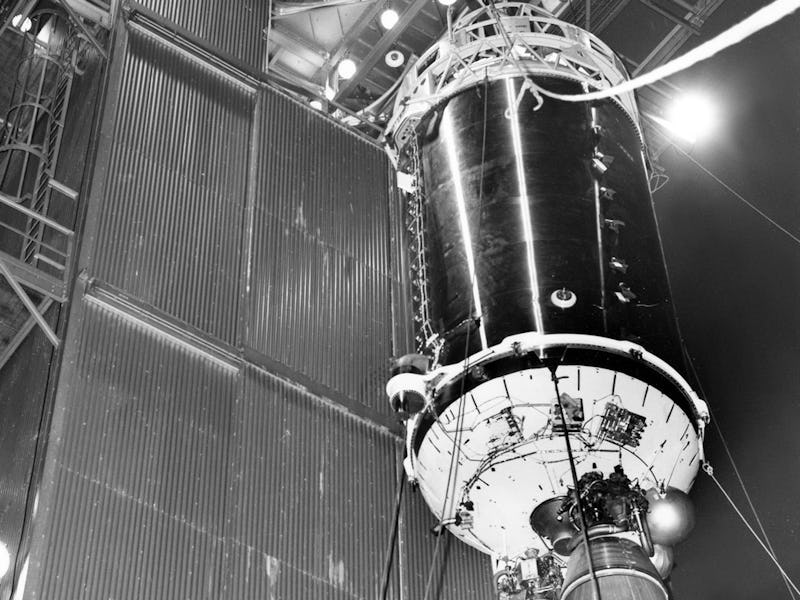
More than half a century after it launched from our planet, rocket booster may have returned to Earth's sphere of influence.
NASA's Jet Propulsion Laboratory announced Thursday that Earth has hosted a temporary satellite over the past few months. Its characteristics suggest it's a rocket booster — likely a Centaur upper stage rocket booster, used in the 1960s to launch the Surveyor 2 spacecraft on its mission to the Moon.
The object is projected to come closest to Earth in December of this year.
Disposable rocket boosters can launch more easily than their reusable modern counterparts. Engineering teams don't have to worry about the recovery process or tweaking their designs. But they also mean losing valuable resources to the depths of space — if reused, they could save millions of dollars and reduce waste.
The Centaur booster is an example of the disposable approach. The booster launched on September 20, 1966, sending the Surveyor 2 lunar lander to observe the Moon's surface. The lander was unsuccessful, failing to ignite one of its thrusters and crashing into the Moon. The booster, which detached as intended, flew past the Moon and off into the Solar System.
A similar Centaur rocket to that which appears to now be in Earth's near-space.
And 54 years later, now it is back.
In September 2020, the Pan-STARRS1 survey telescope in Maui detected an unknown object. Originally thought to be an asteroid, its orbit was unusual. It was strangely similar to Earth's, and its trajectory also seemed to be affected more by sunlight, which would make sense if it were a larger, lower-density object.
After the team simulated the object's trajectory over the course of time, they realized this was no asteroid — rather, it may well have come from Earth some 54 years ago.
Centaur on a mission.
"One of the possible paths for 2020 SO brought the object very close to Earth and the Moon in late September 1966," CNEOS Director Paul Chodas said in a statement.
"It was like a eureka moment when a quick check of launch dates for lunar missions showed a match with the Surveyor 2 mission."
The booster is the kind of space leftovers that may grow less common over time, as the reusable rocket is a key focus of the renewed, modern space race. Companies like SpaceX, Blue Origin, and Rocket Lab are working to perfect systems to allow them to send up a payload like a satellite, then return the booster to Earth. SpaceX first soft-landed its Falcon 9 in 2014, and Blue Origin in 2015.
The technology saves money — Musk estimated in 2013 that reusing saves around three-quarters of the total price tag — but it comes at a cost. Rockets need to be designed for reuse, and they need to save some fuel to safely return home. While a Falcon 9 in 2016 could lift 8,300 kg (18,300 pounds) to geostationary transfer orbit in disposable configuration, that figure drops to just 5,500 kg (12,100 pounds) in reusable configuration.
As for Centaur, it's expected to come closest to Earth on December 1, as it makes two big loops around the planet.
The Inverse analysis — This piece of space history is very much of its era, as modern companies develop reusable systems that would make these less common.
NASA is also working on its own large-size rocket for the new era, as it conducts tests in the coming weeks for its Space Launch System. The rocket is set to support the uncrewed Artemis I mission in 2021, a step toward a crewed lunar mission in 2024.
Like the Centaur, the SLS' boosters will be disposable. It's also designed to one day support a mission to Mars — but with SpaceX developing the reusable Starship that's also intended for Mars, the reusable rocket could ultimately win the day.